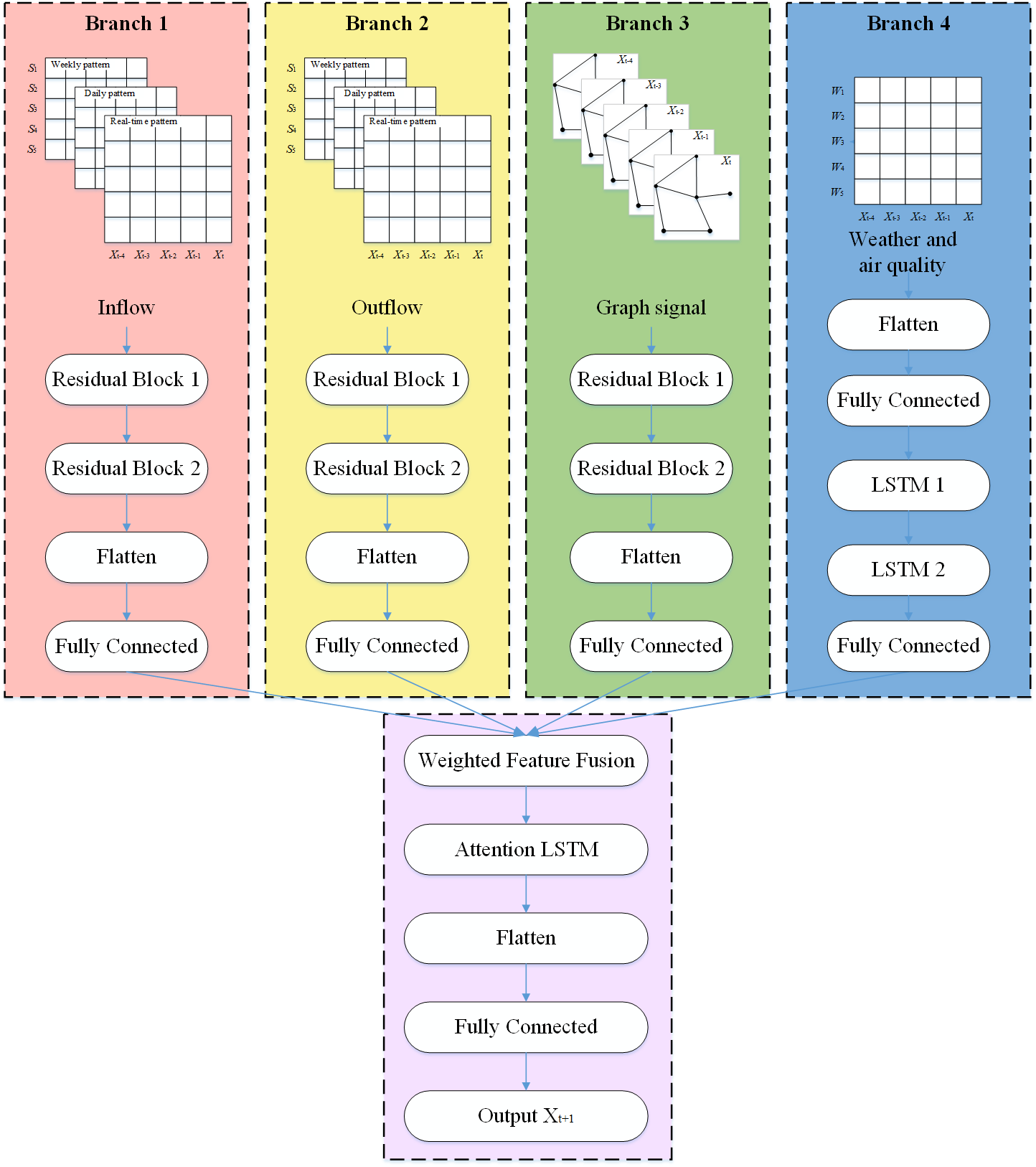Deep-learning Architecture for Short-term Passenger Flow Forecasting in Urban Rail Transit
Short-term passenger flow forecasting is an essential component in urban rail transit operation. Emerging deep learning models provide good insight into improving prediction precision. Therefore, we propose a deep learning architecture combining the residual network (ResNet), graph convolutional network (GCN), and long short-term memory (LSTM) (called "ResLSTM") to forecast short-term passenger flow in urban rail transit on a network scale. First, improved methodologies of the ResNet, GCN, and attention LSTM models are presented. Then, the model architecture is proposed, wherein ResNet is used to capture deep abstract spatial correlations between subway stations, GCN is applied to extract network topology information, and attention LSTM is used to extract temporal correlations. The model architecture includes four branches for inflow, outflow, graph-network topology, as well as weather conditions and air quality. To the best of our knowledge, this is the first time that air-quality indicators have been taken into account, and their influences on prediction precision quantified. Finally, ResLSTM is applied to the Beijing subway using three time granularities (10, 15, and 30 min) to conduct short-term passenger flow forecasting. A comparison of the prediction performance of ResLSTM with those of many state-of-the-art models illustrates the advantages and robustness of ResLSTM. Moreover, a comparison of the prediction precisions obtained for time granularities of 10, 15, and 30 min indicates that prediction precision increases with increasing time granularity. This study can provide subway operators with insight into short-term passenger flow forecasting by leveraging deep learning models.
PDF Abstract
 100DOH
100DOH